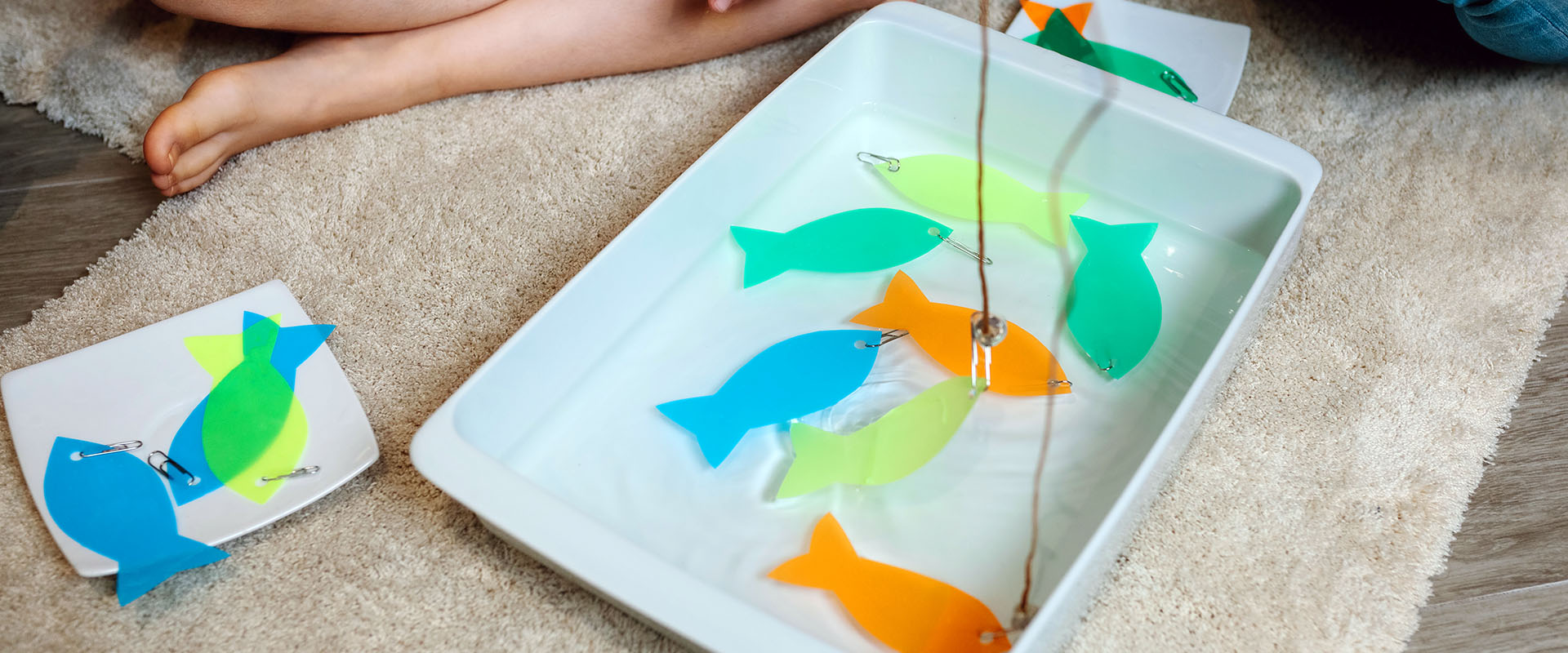Let's go Fishing

You Will Need:
- A Box
- A Bag
- Objects that children use every day
The Activity:
- This game helps children to learn to develop an understanding of what things are called.
- Collect some goodies and put into a bag or box.
- Your child needs to look for, or find an object in the box, then place it in the bag or visa-versa.
- You may ask the child to “Find the spoon” in the box (pointing to the box) and then ask them to “Put it in the bag” (once they have found the spoon and pointing to the bag).
- Eventually you will not need to point to either box or bag as they will become familiar with the words ‘box’ or ‘bag’.
Extending The Activity:
- When playing with toys such as Duplo, cars, dolls or animals, comment on what your child is doing with the toys. This lets your child hear simple sentences or instructions e.g. “Find the slide”, “Give me the dolly”, “Pass me the truck” or “Get the cow and the sheep”. Make sure your child is still enjoying the game by not asking too much.
- Making a little shopping corner together and create a pretend play opportunity. Talk about the items as you pack them out. Once this is set up you could let them be the shop keeper and you need to buy the goodies from them. They have to sell the products to you and fill your basket for you as you give them instructions on your list to buy. “I need,” “I would like,” “Can I have”.
Words to introduce during the activity to support language development
- Give
- Take
- Where
- Box
- Pass
- Find
- Bag
- Please
- Thank You
How This Supports Your Child's Learning:
It is essential for children to understand what is being said to allow them to make sense of the world around them. An ability to follow simple instructions is necessary to be successful at home and school.
When they hear the word ‘ball’ and see a ball, they learn that the word is the name of the object. Use all senses to explore objects together. Give your child the opportunity to smell, see, touch, hear and taste new things. Given them the name of the objects or actions as it takes place.
Top Tip:
Always give the child attention before giving instructions. Your instructions will need to be short and relatively slow, use natural gestures and facial expressions to support what you are saying.





